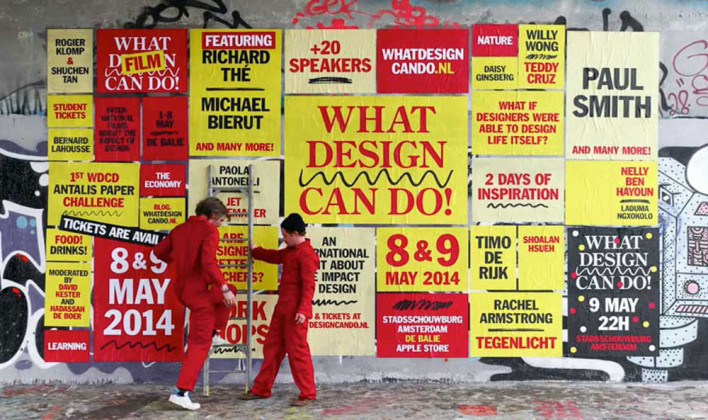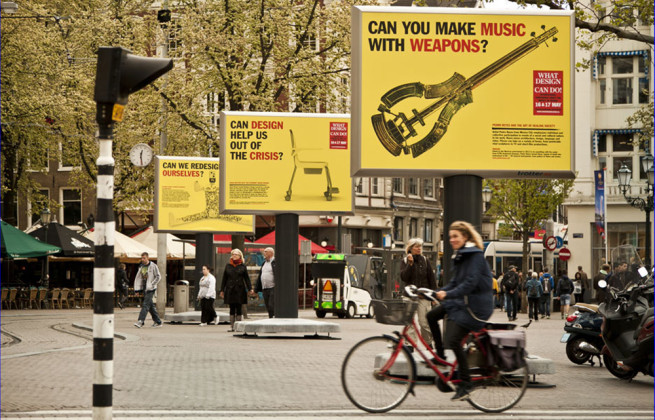Monotonous Creativity—Until When?
Creative director, leader, designer, architect, academician… Accompanied by too many creative titles, and instead of feeling anxious and transforming that anxiety into something tangible, continue to live and produce with the exact same methods. Well, what are we producing, then? Same symbolic rhetoric, plans, renders from different angles, expensive little design products with cool brand names… Are we? Or let’s take a look at the other side: Isn’t it a bit shallow to keep saying “We should get together to talk about this” rather than being together with the people who are already dealing with the relevant issues for a while? Let’s just get rid of this attitude that assumes the refugees arrived only last summer…
Aren’t there any people, however, who have been thinking on these issues from the beginning, who have been looking for different ways, instead of pretending that the problems are brand new? Of course there are! “What Design Can Do”, a Dutch group of creative thinkers. Or let’s stay in the borders of the country and meet contributors of the Saha magazine, published by Helsinki Citizens Assembly and their productions, research and ideas.
As an international platform built on power of design, What Design Can Do sees design as a catalyst of change and regeneration while trying to find solution for today’s social problems. They share their work, including exhibitions, workshops, conferences, movie festivals etc. via mediums such as videos and blogs. The initiative was formed in 2011 by designers from various disciplines to separate the worthless from the worthy. They try to create environments for discussions and interdisciplinary alliances for raising awareness about societal potential of creativity by showing different perspectives and practices. At the same time, they are also inviting designers to take responsibility for their work and to think of differences that can be made in society by their productions.
They offer an open platform and thematic conferences to designers to discuss alternative strategies for the future and to bring the potential of their professions to the table. The theme of was 2012 was “cooperation” while 2014 saw “designer as a game changer.” They announced their 2016 theme as “What Design Can Do for Refugees?” Anyone with a bold idea on one or more of the 5 topics—topics like enhancing social communications, housing, supporting personal development—can upload it on to the platform. The call will continue until the month of May and selected projects will receive financial support. Another theme for 2016 is “What Africa can do for Europe?” With this question, presented in a way we are not used to hear, they try to develop different perspectives on Europe—said to be currently in an existentialist crisis—that include contributions from African designers.
Design may not save the world on its own, but achieving something that is only possible through the coming together of individuals, its consequences, and its ability to realize little differences, may give us hope—which we desperately need. We should criticize our ways of staying alive and question our well-structured concepts of design and production.
Quarterly magazine Saha is an extensive resource formed by people who have been thinking, discussing and producing, for a very long time. They explored the theme of international migration and refugees in their December issue. Unlike others that keep bringing the debate to the Syrians over and over again; you can encounter, on the pages of Saha, refugees from Philippines, Congo or Sudan as well. If we talk the language of politics, the only refugees appear to be the Syrians, currently in the eye of a heated debate; while we ignore the rights of, say, the Congolese living in Tarlabaşı or Filipinos living in Beşiktaş and attending Sunday Mass at St. Antuan Church on İstiklal Street. In this issue, Saha looks at migration politics, Europe’s refugee deal with Turkey, concepts of citizenship and border, the relation between climate change and migration following the COP 21 Climate Summit, migration spaces and immigrant subjects of domestic labor.
You can reach the PDF format of Saha magazine via Helsinki Citizen Assembly’s website.
Related Content:
-

WDCD Unveils the Redesign Everything Challenge for a Circular Future
-

What Design Can Do Reveals The Winners
-

Make It Circular Challenge Announces 50 Nominees
-

Make it Circular Challenge
-
Designing for Refugees
What Design Can Do, an international design platform launched by designers from different disciplines, organized a challenge focused on refugees
 08.04.2016
08.04.2016












